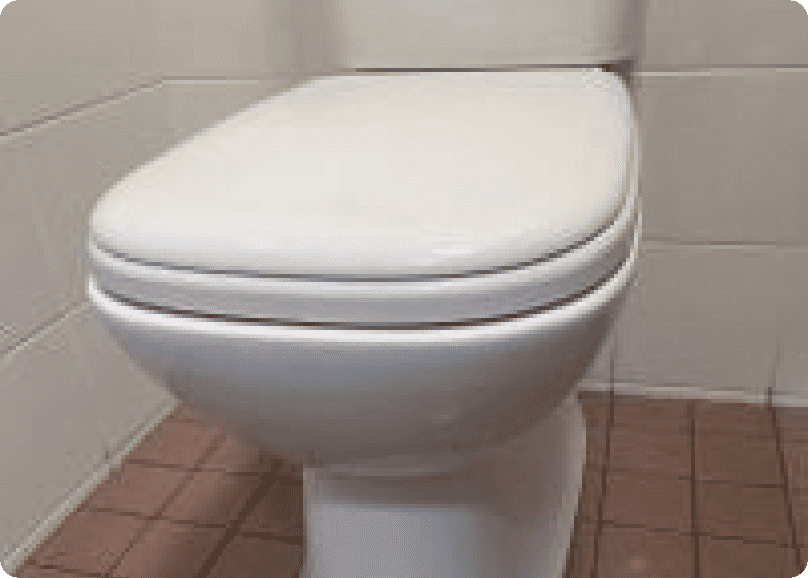How to Use a Plunger to Unclog Your Toilet
- William Demirdonder
- Feb 24, 2021
- No comments
- 15-minute read

Everything You Need To Know About The Plunger!
Uh oh, you have blocked the toilet. Luckily, clogging your toilet is one of the most common, and most easily fixed blockages around your home. In this article, we’ll help teach you How To Use A Plunger To Unclog Your Toilet and break down everything you need to know about the humble plunger, so you are as informed and ready to DIY as possible.
Let’s read about how to unclog a toilet with a plunger.
The household plunger is also known as a “force cup”. Nearly every household has a plunger tucked away in a cupboard under the sink in the bathroom or kitchen, and rightly so because when there is a clog you don’t want to be left without one. However, once you locate the plunger, how do you use it, and are you using it correctly?
As with most DIY Plumbing, not knowing how to use the plunger correctly can go and create a bigger, nastier issue. Then you definitely will need to call the professionals and could be facing a costly emergency plumbing situation. If you are in the midst of a plumbing emergency right now, or you just don’t want to deal with your smaller plumbing problem, call our friendly team today – we are here to assist you!
The following article is a simple yet useful guide to assist you in mastering the use of your plunger in unclogging your toilet, along with everything you need to know about the different types of plungers available to purchase, where you can purchase a plunger and the best uses for the varieties of plungers on the market.
Before we jump into the details of How To Use A Plunger to Unclog Your Toilet it’s important to know the basics. What are you working with? Well, a plunger is a tool that consists of a wooden or plastic handle attached to a rubber suction cup (imagine a rubber ball cut in half). Whilst its design is relatively simple, it is a powerful tool when used correctly to unclog kitchen sinks, blocked drains around the home, and clogged toilets.
The best time to use a plunger is when your kitchen or bathroom sink, shower drain or toilet is blocked.
These blockages can occur due to several reasons:
A Quick Note From The Professionals:
If you’re not sure as to why your sinks or toilets are blocked or you are facing consistent blockages (even after you successfully clear a blockage with a plunger) then it’s our advice you call our team to attend your property and inspect your pipes and plumbing system. There could be a hard-to-spot issue, such as an infiltration of tree roots, happening further along your pipe network. Best to book in a routine inspection with our Proximity Plumbing team and we can see exactly what’s occurring.
There are three types of plungers and each one is designed to be used on a different type of drain.
Flat Plunger – Common Sink Plunger.
Many of you will be familiar with this plunger and may have one stored away in a cupboard at home. It is the one that comes to mind whenever one thinks of a plunger.
Sink plungers have a rubber cup at the end of a straight handle, usually made up of wood or plastic. These plungers work best on flat surfaces which allow the cup to easily create a seal around the drain. Therefore, the flat plungers are generally used to unclog kitchen and bathroom sinks but can also be used in bathtubs.
Toilet Plunger – Also Known As Flange Plunger.
Like the sink plunger, toilet plungers are quite similar in design, they also have a rubber cup, but they also have a soft rubber flap that folds out from inside the cup. The flap is designed to fit around the toilet drain to create the necessary suction to create the clog. Whilst the design of this plunger provides the flexibility for it to fit just about any drain around the house, for hygiene reasons, we recommend that you merely use this for the toilet and keep a flat plunger handy for your sink/bathtub/shower drains.
Accordion Plunger
A less common plunger, the accordion plunger is another plunger used to unclog toilets. Built-up of a single piece of plastic moulded with flexible ridges and a small cup at the bottom, this plunger is designed so that when pressed against the toilet drain, the ridges compress allowing air to shoot out from the cup and push the clog.
When using the accordion plunger, it must be completely submerged in water, therefore, you may need to add extra water into the bowl. Whilst this plunger is seen by many as being more powerful than the flat or toilet plunger, it can be slightly challenging to master its use.
You can buy a plunger almost anywhere. They are available in your local hardware store, homeware department, most major grocery stores and through online retailers.
Here are a few options for you to choose from:
Essentially a plunger creates a vacuum that with added pressure, attracts the material which is causing your blockage. A plunger can also work to loosens or break up the excess material or debris clogging the drain. Now that you know the basic types of plungers and what kind of blockages they’re used to clear, the next step is understanding how to correctly use your new hardware.
To get your pipes pumping once more, here are a few expert tips on how to best use a plunger to clear whatever blockage may be clogging your pipes.
Need a quick visual resource, watch this video on How to unclog a bathtub and shower drain.
If your toilet looks like it is going to overflow:
Need a quick visual resource, watch this video on How to unclog a toilet.
If you have used a chemical drain cleaner before turning to your trusty plunger, we advise skipping the plunger. You could be left with injuries from the cleaning product. In this instance, call a professional to inspect your pipes.
You may want to consider replacing your plunger when the handle begins moving around too much and/or if you notice cracks in the cup. A damaged plunger is less likely to create good suction and therefore be less effective at unclogging your drain.
For hygiene purposes, it is also good to keep it clean by soaking it bleach or a cleaning solution and storing it somewhere convenient.
If you don’t have access to a plunger, then you can buy one from most hardware stores and general stores with ease. However, until the time where you can get to the store, here are a few DIY toilet drain clearing tips to try yourself:
1. The biggest tip to keep your toilet unclogged is to remember the 3 P’s. The only things that should be flushed down the toilet are Pee, Poop, Paper (Toilet paper).
EVERYTHING else including ‘flushable wipes’, baby wipes, feminine hygiene products, nappies (you’d be surprised) have no place in your toilet.
2. Even very thick or large amounts of toilet paper can be an issue, so be mindful of the toilet paper you’re using.
3. If you have small kids who love the idea of making things disappear down the toilet, be sure to teach them what does and does not go down the toilet. This could save a plumber’s fee to unclog the crayons from the S bend!
4. Make sure you clean and flush your toilet regularly to keep the pipes flowing in the best possible way.
If using a plunger does not completely clear your blocked drain or clogged toilet, then you may wish to use alternative methods. There are chemical products you can buy or you can try homemade cleaners such as baking soda and vinegar if you are not keen on using chemicals.
Want to learn more about chemical drain cleaners and why we recommend to our clients that you DO NOT use them? Read our article on chemical drain cleanersto find out why and the friendlier alternatives you can use.
When all else fails, there could likely be a more serious underlying problem, in which case, contact our expert team on 0420 102 394 and our team will be with you within 30-minutes to provide a free onsite inspection at a $0 call-out fee and assist you in unclogging the clog. In the meantime, if you would like to read more about clearing blocked drains, here is one of our previous articles on how to clear a blocked drain.
Understanding your home insurance and what you are covered for when it comes to plumbing can be overwhelming. Do you have cover if the land mower of your neighbour damages part of your pipeline?....
Read MoreFatbergs are created when you flush down wet wipes or “flushable” wipes down the toilet and they get caught up in your pipes with a combination of any oils, fats or grease poured down the ....
Read MoreImagine you’re in the midst of a plumbing emergency (we’ve all been there) and you desperately need an ace plumber on your door step. We doubt in the middle of a plumbing emergency you&rs....
Read MoreIrrespective of how hard you try, sometimes a toilet or bathroom clog is unavoidable. Whatever might be the reason for the clog, you need to clear the same. When you wish to fix the problem, a plunger....
Read More



Leave a Reply
Your email address will not be published. Required fields are marked *